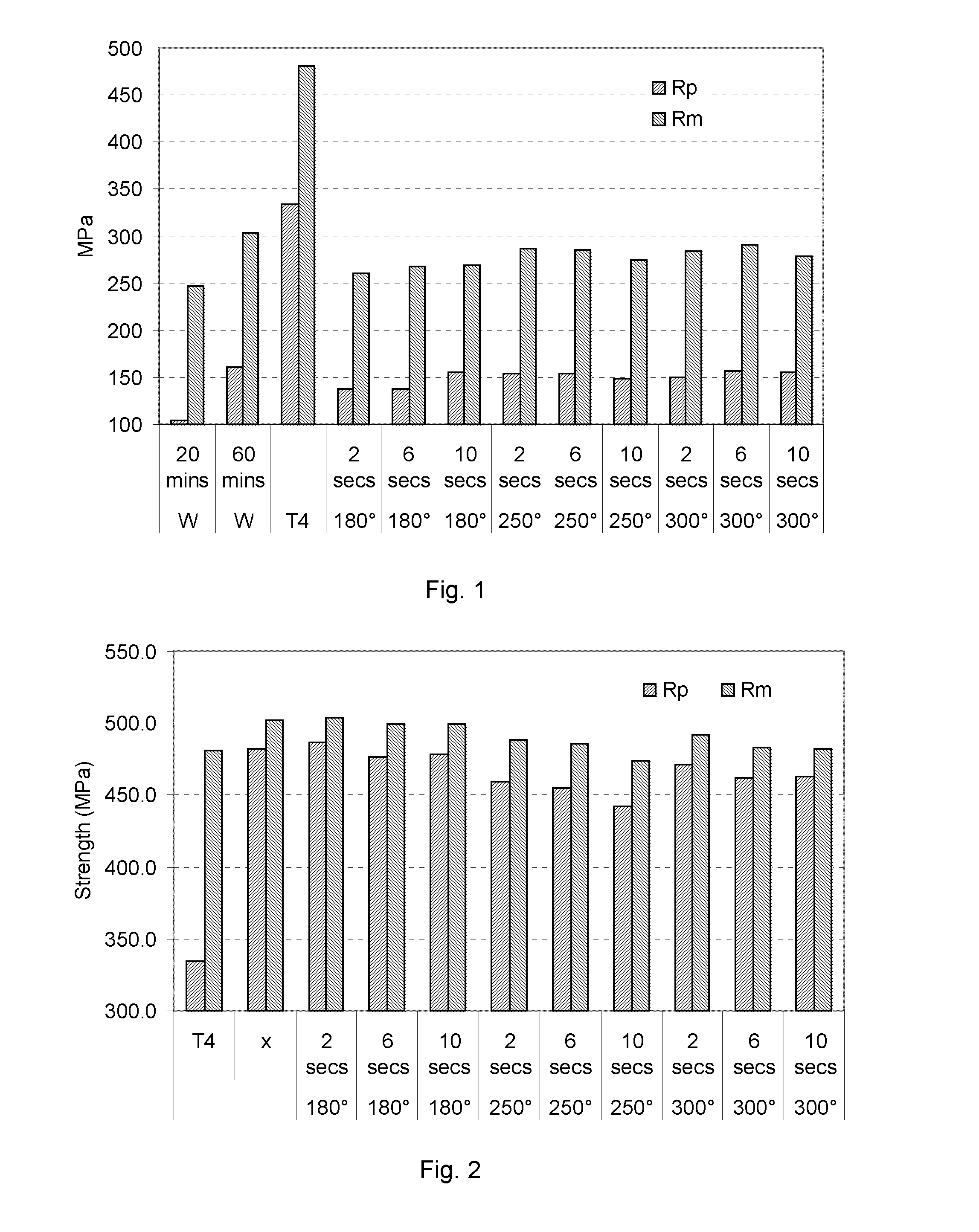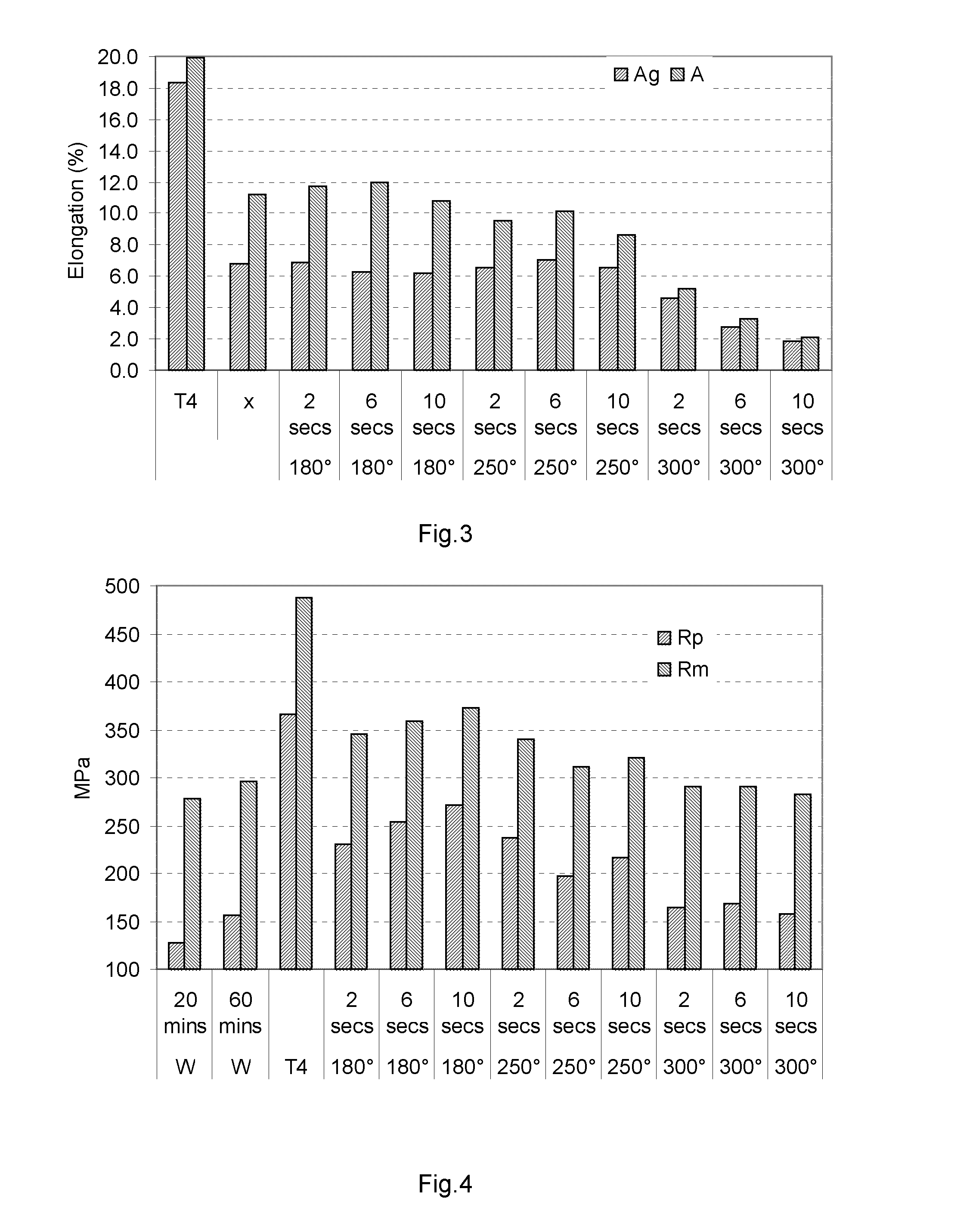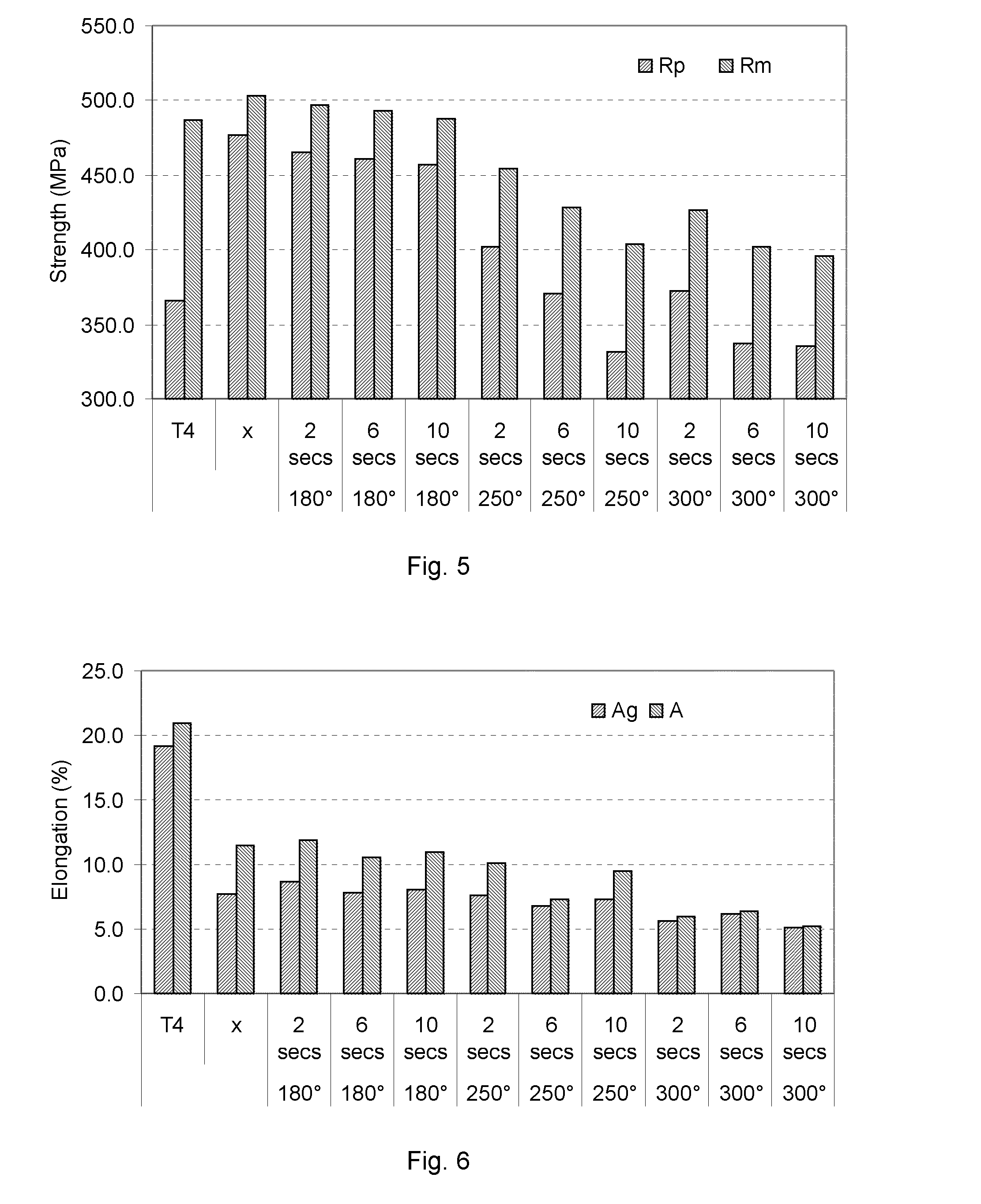Production of formed automotive structural parts from aa7xxx-series aluminium alloys
a technology of aluminium alloys and automotive structural parts, which is applied in the direction of metal layered products, transportation and packaging, layered products, etc., can solve the problems of significant strength increase by about 80%, poor to very poor formability of these alloys, and unpractical, so as to reduce the delayed fracture sensitivity of formed aluminium parts, avoid a reduction in productivity, and avoid corrosive environment. non-aggressive
- Summary
- Abstract
- Description
- Claims
- Application Information
AI Technical Summary
Benefits of technology
Problems solved by technology
Method used
Image
Examples
example 1
[0086]A rolled aluminium alloy bare sheet product has been produced by casting an enriched AA7021 type alloy having the following composition (in wt.%): 6.4 Zn, 1.9 Mg, 0.14 Zr, 0.15 Fe and 0.1 Si, remainder aluminium and incidental impurities. The cast ingot was homogenised, scalped, preheated and hot-rolled down to about 4.2 mm and finally cold-rolled to the final gauge of 1.2 mm.
[0087]The cold-rolled sheet was subjected to a solution heat treatment at 465° C. and quenched by water quenching. After quenching, the sheet was cut into numerous tensile test blanks, each of which were brought to a different temper. In particular, tensile tests were done at 20 and 60 minutes after quenching (W-20 min and W-60 min), as well as as-received T4 (approximately 6 months natural ageing (NA)). Some of the T4 specimens were then subjected to a reversion annealing treatment by clamping between two hot plates of a certain temperature for a pre-determined time between 2 and 10 seconds. After remova...
example 2
[0091]Another sheet product was prepared by casting aluminium alloys AA7081 and AA7072 separately, homogenising, and roll-bonding the AA7072 alloy as cladding to the AA7081 alloy as core layer. This product was hot-rolled to a gauge of about 4.2 mm, and cold-rolled to a final gauge of 1.2 mm. This rolled sheet product was solution heat treated and quenched, and then cut into tensile test blanks, which were brought to the same tempers and subjected to the same reversion annealing treatments as in example 1.
[0092]The results of the tensile tests, executed within 2 hours after the reversion annealing, are shown in FIG. 4—again, the numbers indicate the time and temperature of the reversion annealing treatment. Again, the results show that the inventive annealing results in a significant reduction in yield strength and tensile strength compared to T4 temper, thereby allowing much more complex forming operations to be performed on this composite sheet.
[0093]As in example 1, the samples w...
example 3
[0095]Three different sheet products were prepared and subjected to a deep drawing trial done on a cross-die, wherein the cup height at rupture was measured. The three sheet materials consisted of a bare sheet material of the enriched AA7021 type alloy of example 1 (7021v2), a composite sheet product having the same core composition and clad with AA7072 alloy (7021v2 clad), and for comparison purposes a sheet product having a composition of the AA6016 series (Carlite). The sheet products were cut to sizes of 230 mm and 260 mm, and brought to the different temper conditions shown in FIGS. 7 and 8. The middle shows the achievable cross-die height of T4 samples subjected to a reversion annealing treatment at 180° C. for 6 seconds. On the right, different W-tempers have been tested, and the left shows the achievable cross-die in T4-temper.
[0096]The results show that—although the W-temper yields the best formability—the formability after a reversion annealing treatment according to the i...
PUM
| Property | Measurement | Unit |
|---|---|---|
| temperature | aaaaa | aaaaa |
| temperature | aaaaa | aaaaa |
| yield strength | aaaaa | aaaaa |
Abstract
Description
Claims
Application Information
 Login to View More
Login to View More - R&D
- Intellectual Property
- Life Sciences
- Materials
- Tech Scout
- Unparalleled Data Quality
- Higher Quality Content
- 60% Fewer Hallucinations
Browse by: Latest US Patents, China's latest patents, Technical Efficacy Thesaurus, Application Domain, Technology Topic, Popular Technical Reports.
© 2025 PatSnap. All rights reserved.Legal|Privacy policy|Modern Slavery Act Transparency Statement|Sitemap|About US| Contact US: help@patsnap.com



